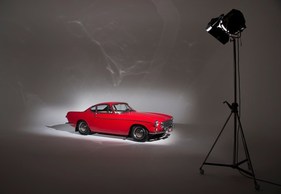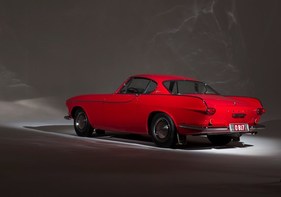Volvo P 1800 in (historic) test - a coup of European cooperation?
Summary
The name of the Volvo P 1800, which went into production in 1961, suggests that it was designed and manufactured in Sweden. In reality, the elegant two-door car with the loyal look and shapely tail fins was produced in England and equipped with electrical components from Bosch, while the body was modeled in Italy, the country of the most famous sheet metal artists. Today, in addition to the consequences of Brexit, other intra-European conflicts are also making headlines. Did this joint automotive project succeed 60 years ago? This article reproduces an original test report from the time and shows the touring coupé in numerous historical pictures and sales brochures.
This article contains the following chapters
- Sports car or not!
- Interior and equipment
- Excellent gearbox
- The engine: velvety smooth despite 9.5:1 compression ratio
- Amazingly low fuel consumption
- How it drives
- Heating - Seat belts - Price
Estimated reading time: 13min
Preview (beginning of the article)
The Americans are very probably "to blame" for its existence. The Volvo Coupé P-1800 was probably created primarily for the US market, but has since found many friends in the old world too. This Volvo is not a "real Swede", so to speak. It is the product of a well-balanced European joint effort to which, in addition to the parent company in Gothenburg, renowned plants in England, Germany and Italy also made considerable contributions. The engine and chassis of the P-1800 came from Volvo, the steering was supplied by ZF, the electrical system was provided by Bosch, the bodywork was created in Italy, the Girling brake system, carburetor, the optional high-speed gearbox, the instruments and the pressed body parts came from England. Assembly also takes place in England...
Continue reading this article for free?
Photos of this article



























































